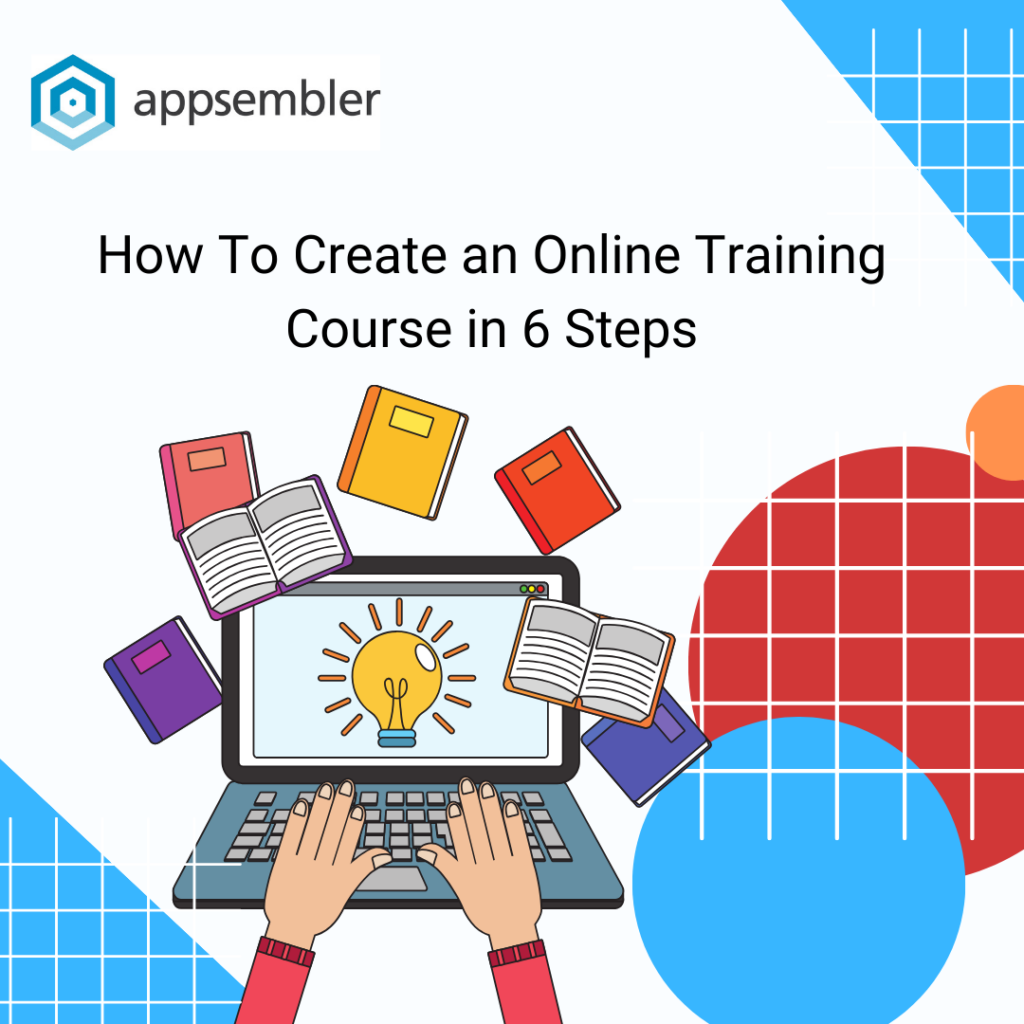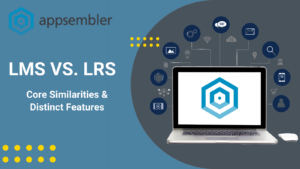An online training course can be an excellent way to train and showcase your expertise to customers, partners, and employees or generate passive income by teaching learners online. A course helps build credibility by showing the world you know your subject well.
However, creating an online course can be a challenging process. You can make this process less overwhelming by relying on the right tools and systems.
Key Takeaways
To create an online training course, you will need to follow these six steps:
- 1. Establish Your Course Objectives
- 2. Define Learner Success
- 3. Outline Course Modules
- 4. Choose a Platform That Aligns With Your Goals
- 5. Finalize and Implement
- 6. Analyze, Reassess, and Modify
Table of Contents
Why Is Online Course Creation Important?
Most learners liked the experience of self-paced learning. With the ability to learn asynchronously, online courses are rapidly increasing in popularity among schools and businesses alike.
Online courses are created to:
- Generate business leads
- Build a stronger employer brand
- Train employees
- Build authority in your industry
- Offer customers the knowledge needed to use your tools effectively
- Generate passive income
How to Create an Online Training Course
Creating an online course can be a lengthy and overwhelming process. You can simplify the process by breaking it down into smaller, less challenging steps. We’ve done this for you—here are six steps to create an engaging course.
1. Establish Your Course Objectives
While defining objectives is a small part of the overall process, it’s just as crucial to the learner’s success. Course objectives provide direction when developing the course and set clear expectations for learners. At the end of the course, learners should be able to quickly glance over the objectives to ensure desired learning outcomes.
Here are a few best practices to follow when writing course objectives:
- Keep objectives concise: Learners should be able to quickly glance through them, so keep them clear and concise.
- Offer enough detail: Conciseness shouldn’t come at the expense of detail. Provide enough detail for learners to understand what they’ll get out of the course by striking a balance between detail and conciseness. For example, don’t just say you’ll learn business valuation. List the techniques and concepts included in the course. However, avoid discussing these techniques and concepts.
- Objectives should be realistic: Suppose the course teaches coding. Instead of promising that learners will be able to code and design software after completing the course, say that the course will equip them with the knowledge to develop software, and with enough practice, they’ll be able to code entire applications independently.
2. Define Learner Success
Define how you’ll determine if a learner was successful. For example, you may consider a learner to be successful in an advanced learning course when they have a good grasp of the course material and can effectively apply their new knowledge at their workplace. You can use this information as input when modifying and improving the course.
Success criteria may differ based on the course subject and the learner’s demographics. Assessments are an excellent way to measure learner success. However, course completion rates, questions from learners, and feedback are also great ways to gauge learner success. Tracking these parameters can help you understand how well your course is working for learners.
For example, if the course completion rate is low, is it because the course content is too complex or too easy for your learners? Could content delivery be the problem? You can modify your course to improve learner success as you go, provided you’ve defined what learner success means for your course.
3. Outline Course Modules
This is the most critical part of the course creation process. You must organize your course modules logically and break them down into smaller, more digestible sections. Of course, there’s such a thing as too many sections. View the course from a learner’s perspective when creating sections so it’s challenging enough but not too overwhelming.
For example, when creating a course on business valuation, you could break it down into the following modules:
- Module 1: Fundamentals of Valuation: Free Cash Flow to Equity, IRR, and Risk in Valuation
- Module 2: Intrinsic Vs. Relative Valuation
- Module 3: Discounted Cash Flow, Sum of the Parts, and Other Intrinsic Valuation Methods
- Module 4: Relative Valuation Methods
- Module 5: Valuing Options and Minority Interests
You can break these down further into lessons.
Defining the content format is just as crucial. The content format you choose depends on factors like the subject’s complexity and the course’s price.
For example, if you want to provide the course for free or at a low price, you might consider limiting content to text and screenshots. If you’re creating a more extensive or high-priced course, you might consider adding video content, workbooks, and downloadable content like cheat sheets.
As a best practice, keep videos under 10 minutes to keep the content actionable. Microlearning improves learner retention and makes the content more digestible.
Note that this is a general method for creating course outlines and the exact process may differ based on your audience, subject matter, and other factors. For example, when creating a customer training program, involving your customers in the process is crucial to the course’s success.
4. Choose a Platform That Aligns With Your Goals
Choosing the right platform is vital because course platforms offer varying feature sets. You need a cost-effective, scalable solution, and integrates with all the major software solutions.
Appsembler is an excellent example of a cost-effective SaaS that helps develop courses at scale. Here’s why you should consider Appsembler:
- Feature-rich: Appsembler is a feature-rich platform that integrates with all the popular business software solutions.
- Uses Open edX: Open edX is an open-source content management system that delivers online course content and is trusted by organizations of all sizes. We use Open edX tools for course authoring and delivery and provide support and training to users creating self-paced courses.
- Excellent support: You don’t have to figure everything out yourself. If you need help implementing Appsembler, our team can help you so you can deliver top-notch learner experiences cost-effectively.
5. Finalize and Implement
Once you’ve established the course objectives, defined learner success, created the course content, and selected a platform, you’re ready to create your course within the LMS, price and publish it.
You can determine the course’s price based on the volume of content. For example, a mini-course could be free or cost a few dollars, while a masterclass with hundreds of hours of content would usually cost more. Here are other factors that affect pricing:
- Industry and complexity: Creating a course for in-demand industries like finance or technology or on complex subjects generally fetches you a higher price. For example, a course on finance costs more than a course on creative writing, even when both courses have the same content volume.
- Expertise: If you’re an expert, you can demand a higher price for your skills and experience. For example, a course created by the ex-CIO of Google would cost more than a course from the software test lead at Google.
- Marketing budget: Marketing a course doesn’t guarantee higher sales. However, you still need to factor the marketing cost into your price.
Once you have a price tag, you’re ready to make your course available to the learners on your chosen course platform. If you need help setting it up, Appsembler’s customer support team can walk you through the entire process.
6. Analyze, Reassess, and Modify
Seek customer feedback and testimonials from learners to understand what you should and shouldn’t do. Positive feedback works as social proof and helps acquire more learners, while negative feedback helps to identify room for improvement in course content.
Use feedback and your own assessment to optimize course content. For example, if a learner mentions another course that offers more immersive content, take a look at that course. See what the learner is referring to and reassess your own course material. Modify the course if you believe it will improve the learner’s experience.
Using Appsembler to Create Quality Online Training Courses
Appsembler is a Learning Management System (LMS) that allows you to create and distribute self-paced training courses for learners, customers, partners, and employees.
Here’s how Appsembler helps create quality online training courses:
- Interactive training experiences: Why limit yourself to MCQs? Build interactive self-paced training experiences with Appsembler to make your courses more intensive and engaging.
- Integrations for business software solutions: Need to migrate data? The Learning Tools Interoperability (LTI) helps integrate Appsembler into your business’ tech stack to make data migration a breeze. Appsembler also integrates with Assembler Virtual Labs, which helps provide hands-on software training in an immersive environment.
- Extensive feature set: Appsembler is perfect for businesses that want to create an online university for employees or customers. You can use your brand’s colors, fonts, and logo and manage content using Appsembler’s built-in content management system (CMS).
KPI tracking: Appsembler helps track KPIs like the number of user registrations, monthly active users (MAU), and section and course completion. This gives you insights into what’s working and where there’s room for improvement.
Create Outcome Focused Online Training Courses with Appsembler
While great quality content is at the heart of a successful course, modern learners—whether they’re students, customers, or employees—expect a rich learning experience.
Using an LMS like Appsembler gives you access to tools needed to make your course more engaging and interactive. Appsembler Virtual Labs is especially helpful when you want to offer your audiences a hands-on software experience and enhance learning retention.
To learn more about Appsembler’s interesting features and how it can help drive your course’s success, schedule a demo today.
Frequently Asked Questions
When choosing the right LMS for your organization, consider the following factors:
– Training Objectives
– Audience Size
– Scalability
– Reporting Capabilities
– Budget
Evaluate your top options based on how well they align with your specific needs and goals.
Yes, if your LMS allows! To optimize online training for mobile devices, use responsive design and ensure content is mobile-friendly. To accommodate learner preference for on-the-go and remote learning, consider offering options for offline access wherever possible.
To make online training engaging, incorporate various multimedia elements such as videos and interactive quizzes. Keep learners motivated by incorporating gamification techniques like badges, points, and certifications to create a competitive and rewarding learning environment. Gamification can add an element of fun and challenge to a seemingly mundane task.



